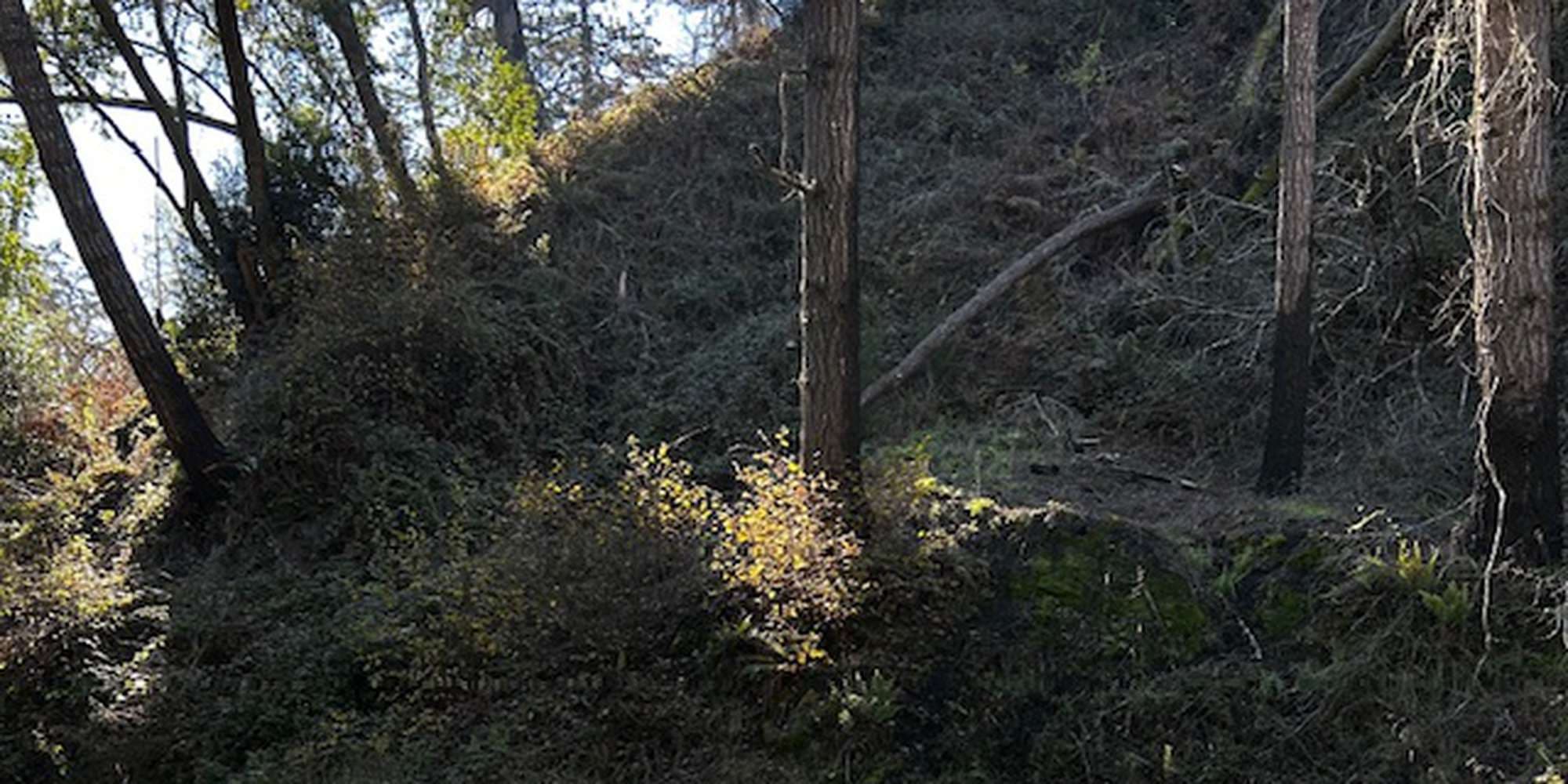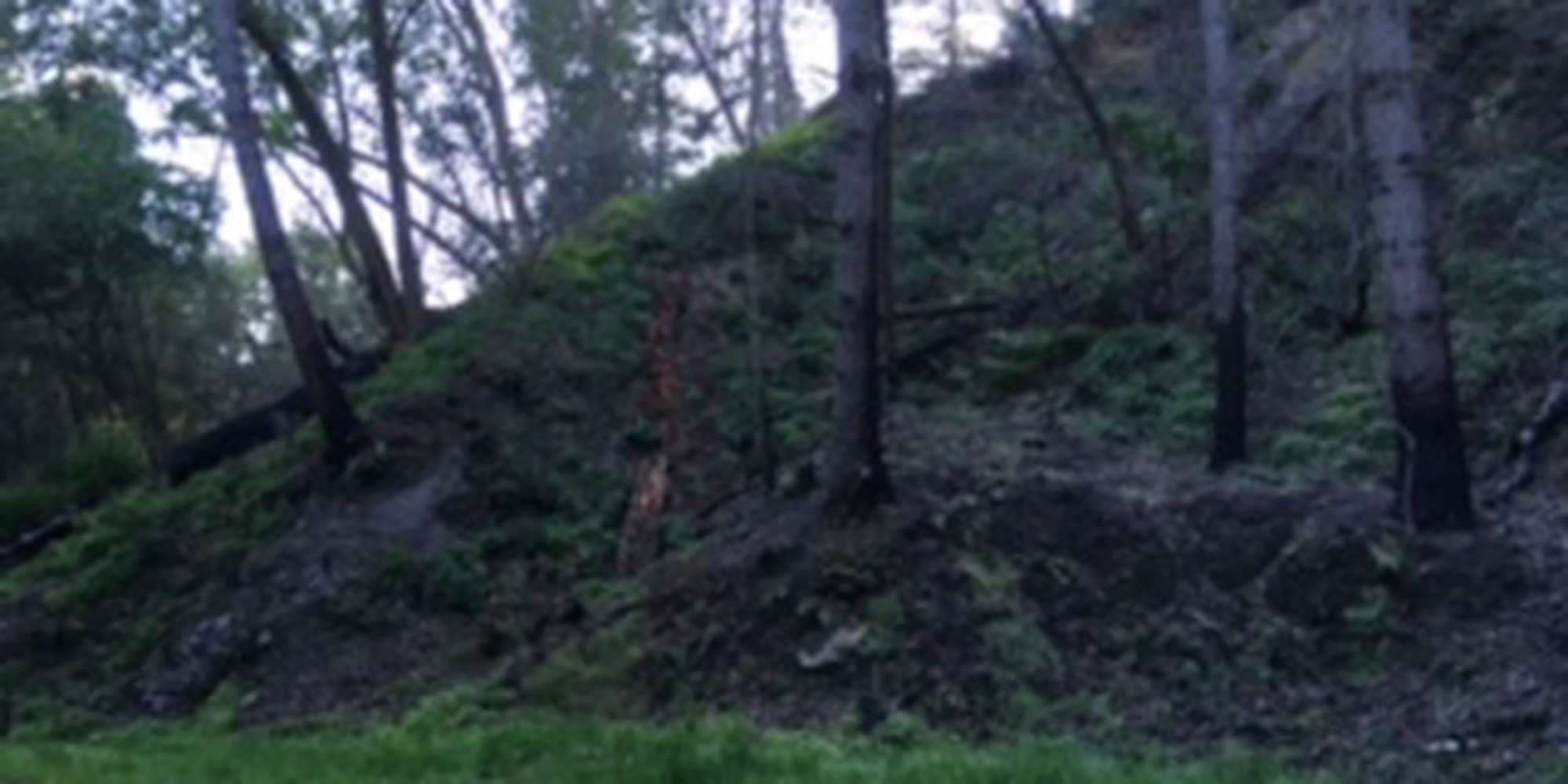2022
2023
2024
2025



2022
2023
2024
2025
Woodward Fire Photomonitoring Site 1
Managed by Point Reyes National Seashore Association
Since 2022
In California, US
PRS101
This chronolog combines 287 photos from 254 contributors. Learn more
About this site
An early burn site photo from November 20th, 2020.
The Woodward Fire burned close to 2,000 acres in its first four days due in part to the lack of available firefighting resources, since so many fires were burning simultaneously across California in the summer of 2020. While the Woodward Fire continued to spread after this initial phase of rapid growth, the remaining 3,000 acres that burned did so more gradually during burn-out operations.
A burn-out operation is a method of managing or containing a wildland fire. Rather than focusing all efforts on putting out a blaze, firefighters strategically plan containment lines in the directions a fire may spread. Firefighters choose lines where they think it will be reasonable to stop the fire, provided there is not a risk to life or property in between. Lines may be well beyond the fire’s present boundary, and can be an existing natural feature like a river or a cliffside, or a man-made feature such as a road or trail–anything where firefighters can stage resources and the flames cannot reasonably jump over.
Once the containment line is in place, firefighters will conduct “back burns”, essentially burning the area between the containment line and the fire’s edge. They will thin out flammable materials and set up hoses to ensure the back-burn remains controlled and does not get too hot.
The Bear Valley Trail and adjacent creek served as a containment line for the Woodward Fire. If you are walking south on the Bear Valley Trail (away from the Visitor Center), almost the entirety of the right-side of the trail makes up the eastern perimeter of the Woodward Fire. The hillside shown in this timelapse was not burned in the initial blaze, but rather was a low-heat back-burn which also resulted in healthy outcomes for many fire-adapted native plant species along this trail.
About Point Reyes National Seashore Association
Located just north of San Francisco, the Point Reyes National Seashore spans 110 square miles of coastline, rocky headlands, expansive sandy beaches, open grasslands, brushy hillsides, and forested ridges. Point Reyes offers visitors over 1500 species of plants and animals to discover across a variety of habitats and designated wilderness areas. Home to several cultures over thousands of years, the Seashore also preserves a tapestry of stories and interactions between people and their natural surroundings.
On Monday, August 17, 2020, a lightning storm sparked a wildfire within Point Reyes National Seashore which was named the 4-5 Fire, north of the junction of Woodward Valley Trail and the Coast Trail. On Tuesday, August 18, a second lightening ignition was located nearby, originally named the 4-6 Fire. Aided by gusty winds, these fires soon combined to form the Woodward Fire, which quickly grew in size. Various resources from across the country and state were called in to help control the blaze. By Thursday, October 1, 2020, the Woodward Fire was 100% contained at 4,929 acres in size, but not declared officially out until Tuesday, January 12, 2021.
All told, park scientists and managers largely consider the Woodward Fire to be ecologically beneficial because it had a mix of burn severity. Periodic wildfires are a common feature of many California ecosystems, and many native plant communities are adapted to tolerating or even requiring occasional fire events for reproduction and regeneration. The vast majority of parklands within the fire’s footprint received a low or moderate burn, which can lead to healthy fuel reduction and improved habitat for many native species. Other tracts of land sustained a more severe burn, and these areas may take longer to recover from the event.
Your photo contributions will help park scientists track re-growth in the Woodward Fire zone and answer questions about plant and animal habitat recovery following the fire.
The Woodward Fire Recovery Monitoring Project is a joint program of the Point Reyes National Seashore Association and the National Park Service.
The Point Reyes National Seashore Association (PRNSA) was formed to help the National Park Service preserve and enhance the Point Reyes National Seashore’s natural, cultural and recreational resources. As the park’s primary nonprofit partner, we raise funds to support critical resource preservation projects and offer year-round environmental education programs that engage the public in accessing, enjoying and understanding Point Reyes National Seashore.
For nature-lovers
Explore chronologs
For organizations
Chronolog is a monitoring tool for parks, nature centers, wildlife organizations, schools, and museums worldwide. With over 100,000 contributors across 300 organizations, Chronolog is on a mission to engage communities with nature while recording important natural changes.
© Chronolog 2025 | Terms